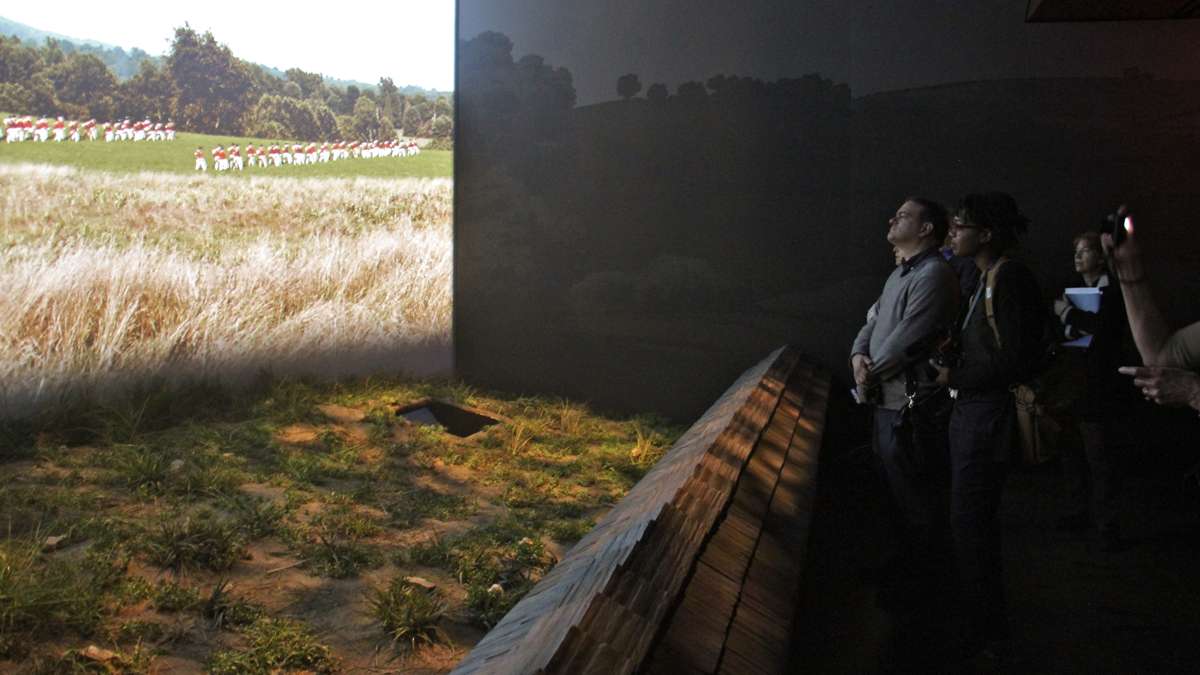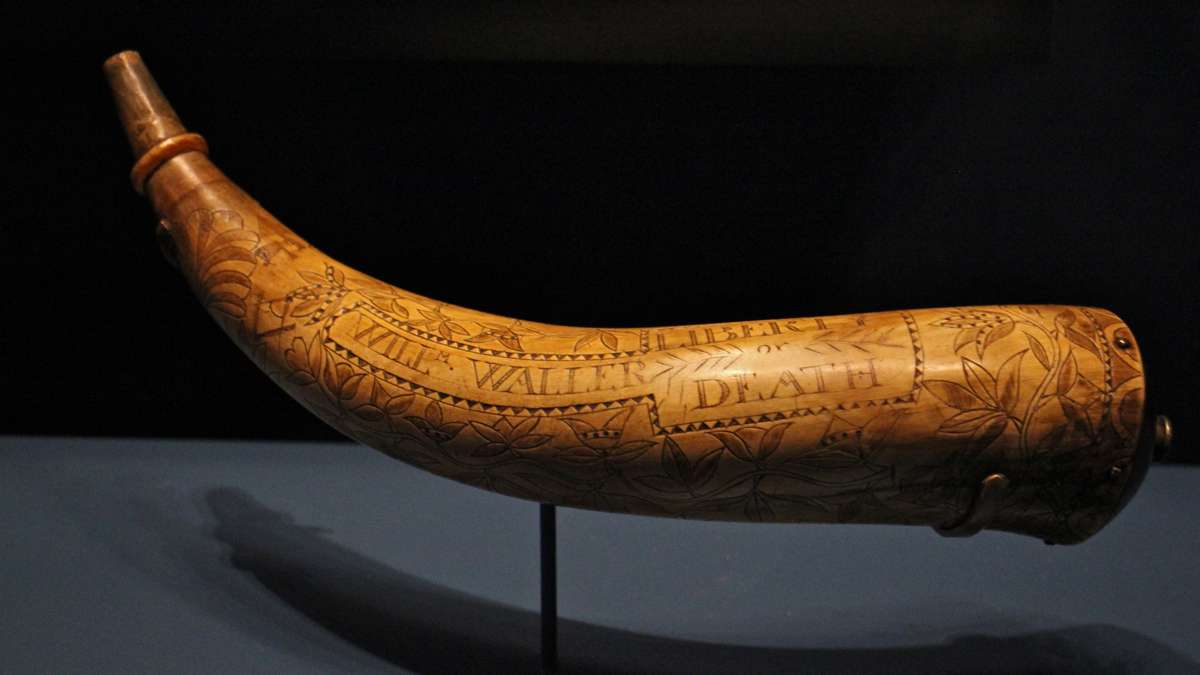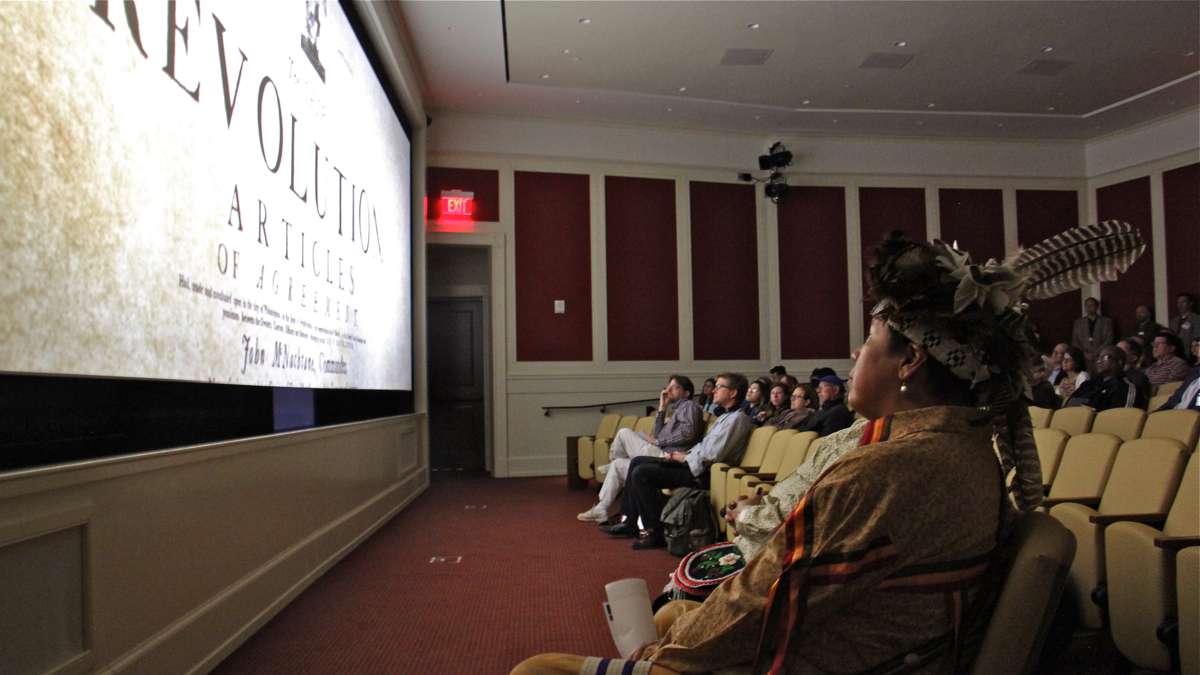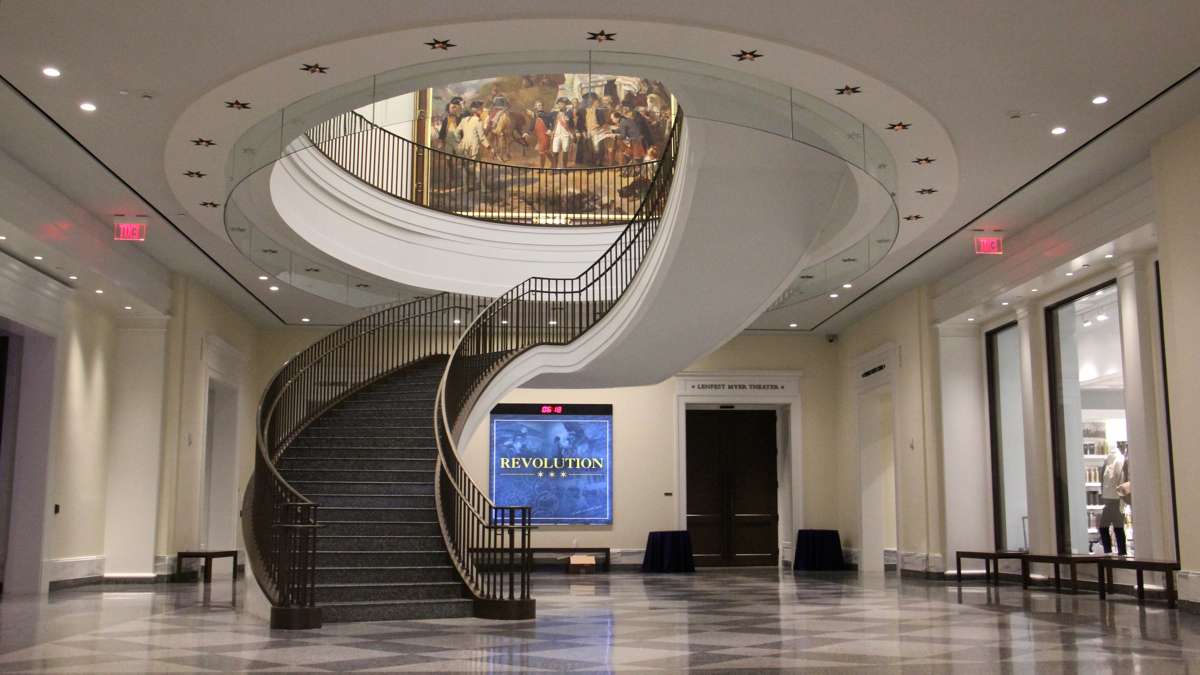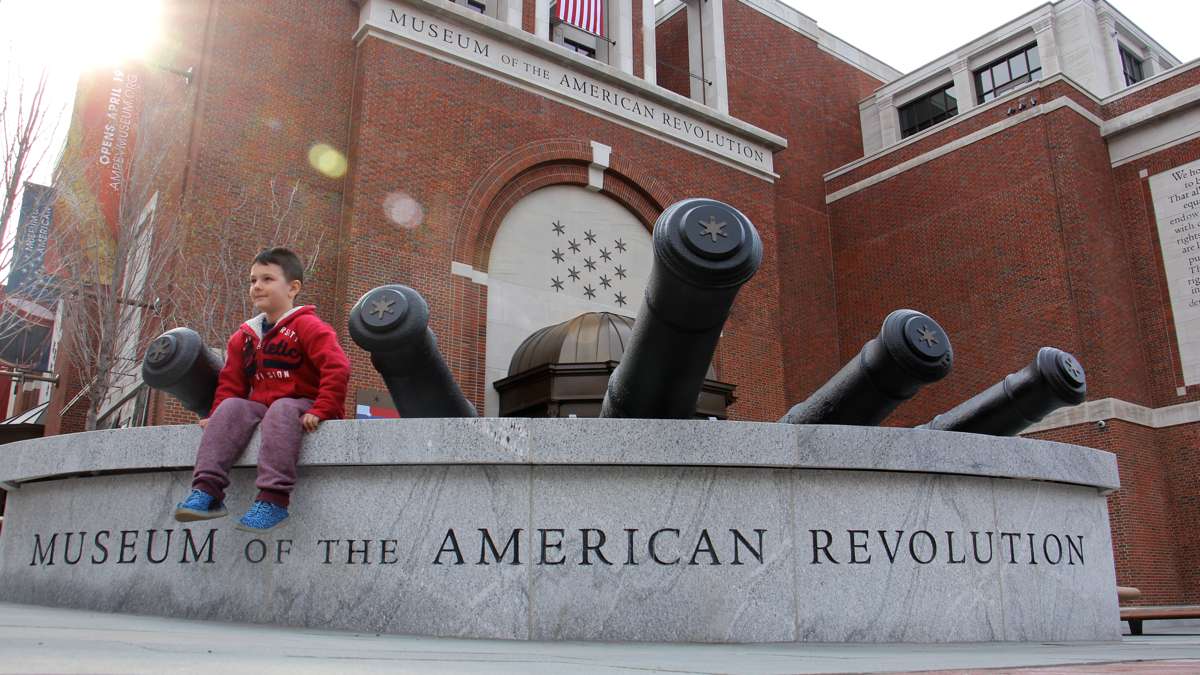What you’ll see at the new Museum of the American Revolution [photos]
ListenNext week, the Museum of the American Revolution will open in Philadelphia. The $120 million museum is the newest addition to the city’s historic attractions in Old City, telling the soup-to-nuts story of the Revolution — from early grumblings about taxation, through an eight-year war, to establishing the nation’s founding documents – with theatrical flair.
The American Revolution was a long, messy, and — in some perspectives — not altogether successful effort to achieve independence. To tell the story of the good, the bad, and the ugly, the museum pulls out every trick in its curatorial bag.
Consider the floor.
In some parts of the exhibition you are standing in battlefield mud — or, rather, a re-creation of hardened mud, its gritty surface pocked with horseshoe divots and carriage wheel ruts.
Or, you’re walking on hardwood floorboards of a typical colonial home, where the woman of the house may have boycotted British goods as a way to fight an economic war on the domestic front.
Or, you are walking the deck planks of a life-size re-creation of a colonial privateer ship.
Or, you are in the tall grass of a cow pasture in South Carolina, waiting for the 1st Continental Dragoon cavalry to surprise the British soldiers.
Scott Stephenson, the museum’s vice president of exhibitions, wanted this to feel like you’re walking through a movie.
“Like filmmakers, you have to make dramatic decisions about which things you emphasize, which people you lift up,” he said. “There will be passionate people who come in and say, ‘the Skirmish of McGillicuddy’s Mill is not here, and that was the turning point of the war.’ You can’t pack all that under one roof, nor would you want to experience that. So it is very much a narrative.”
Stephenson has at his disposal a collection of historical artifacts and documents that has been slowly building for a century, and leverages them into a theatrical experience with lighting, sound, and set design.
He also used interactive touchscreens, but sparingly. Bucking a recent trend in museums, computer bells and whistles are kept to a minimum. What few interactive touchscreens there are — there are exactly three — were designed by the Philadelphia-based company Bluecadet. CEO Josh Goldblum said it’s easy to get blinded by science.
“If it’s just the innovative technique of the moment, and you get a big article in Fast Company, or you get to talk at TED about how you’re in innovating, that technology, unless it really serves the content, is going to get old really quickly,” he said.
Goldblum designed a touchscreen that allows users to interpret old newsprint broadsides of the time, in order to decode their complex language, symbolism, and propaganda. Another gives viewers a chance to inspect weaponry up-close through high-resolution photography, and another lets them meander through alternative perspectives on the war through the lives of five African-Americans.
The thrust of the exhibition is emotional. It is filled with stories of common individuals unwittingly caught — for better or worse — in a radical time. Many are told through the oldest museum trick: the tableau diorama. Life-size cast figures are frozen in an historic moment.
Assistant curator Mattherw Skic was asked to model for a British soldier named William Burke, packing his first musket shot during his first battle against the Americans in 1776. Skic was asked hold an expression of “fierce determination” while liquid latex was poured over his face. He had to hold that grimace for 10 minutes while the latex hardened into a cast.
“Burke was a real person, and he had emotions,” said Skic, who at the time was 25. In 1776, Burke was 24. “I can’t imagine what he was thinking when he was in battle for the first time. But it must have been scary and a serious situation for him.”
The museum hopes that empathizing with an individual’s face, rather than with an animation of troop movements, will drive home the story of the American Revolution.
WHYY is your source for fact-based, in-depth journalism and information. As a nonprofit organization, we rely on financial support from readers like you. Please give today.





